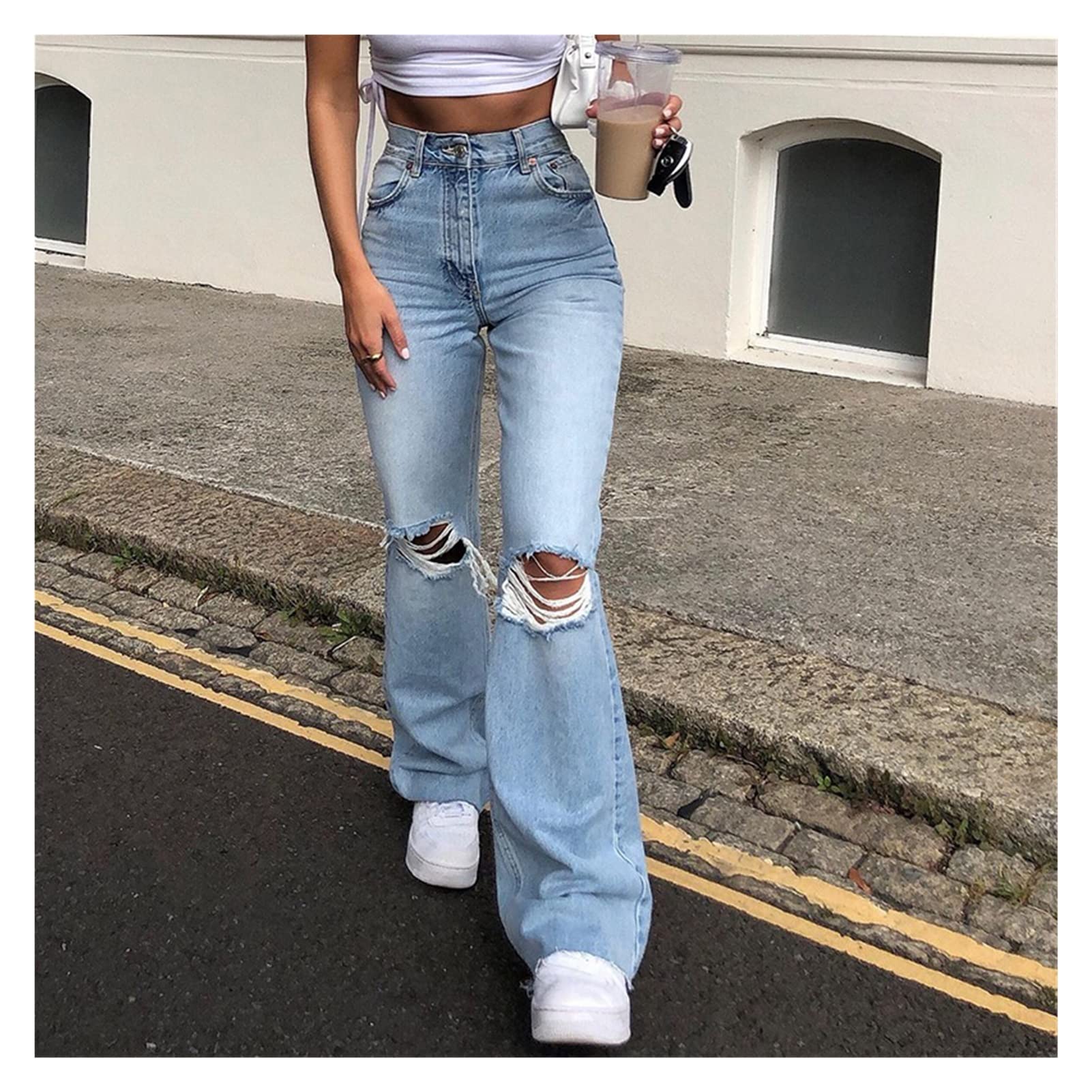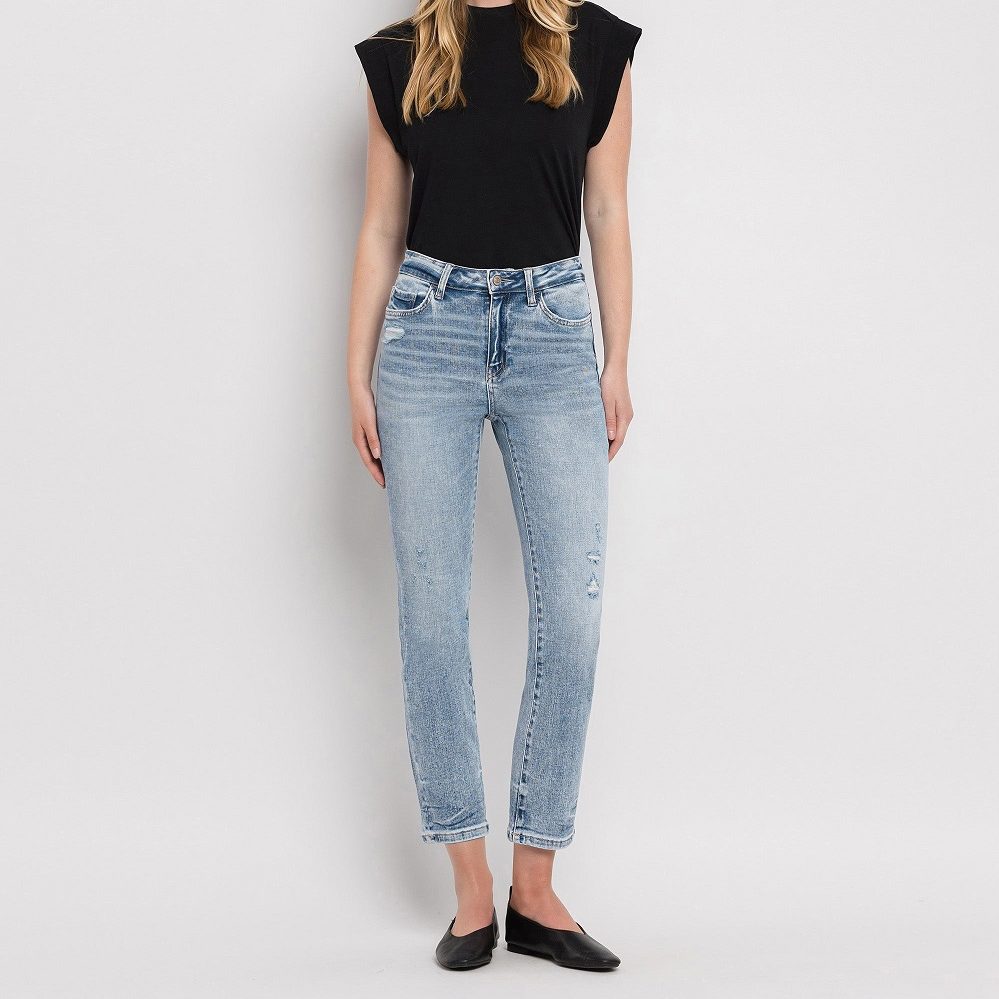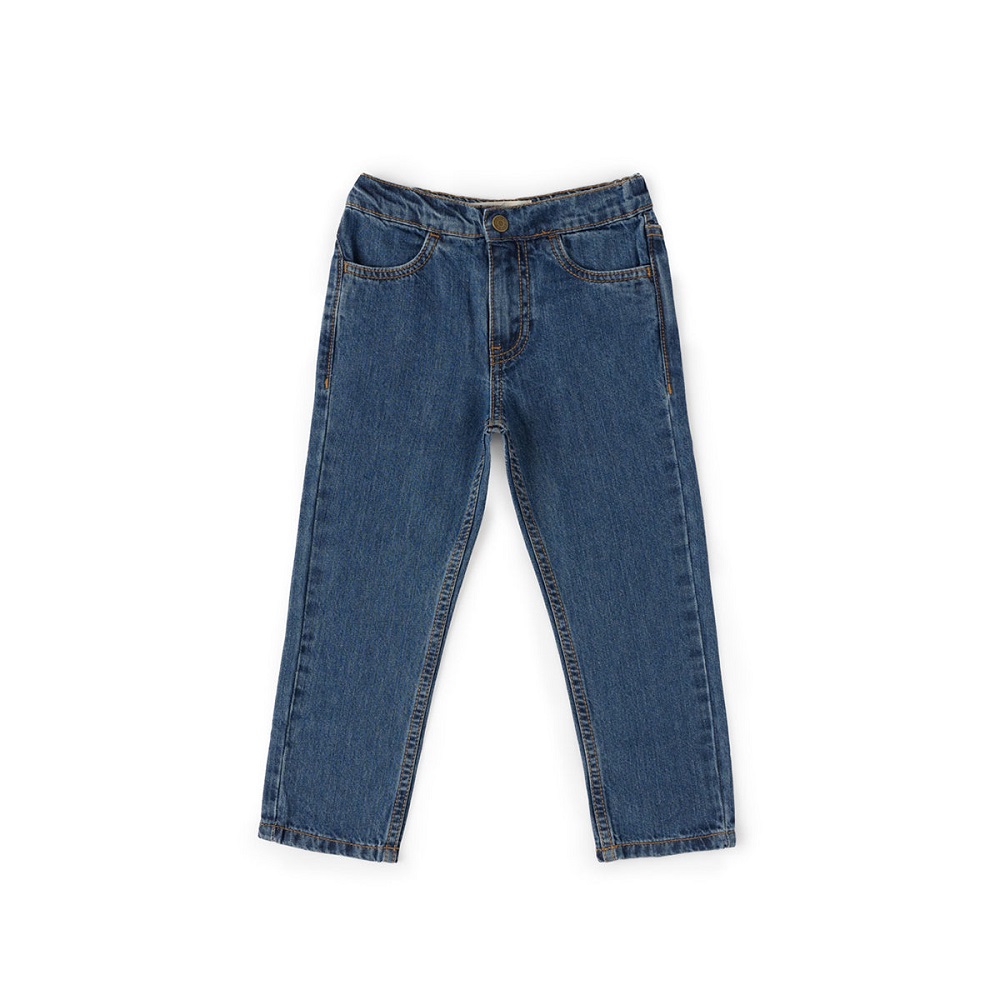How to make jeans smaller? Finding the perfect pair of jeans that fit just right is a challenge, but what do you do when your favorite jeans are a bit too loose or too big? Luckily, there are various techniques you can use to make your jeans smaller and achieve a more tailored fit. In this comprehensive guide, we will explore different methods for altering your jeans to make them smaller, ensuring a comfortable and stylish fit that showcases your personal style while preserving the integrity of the denim fabric.
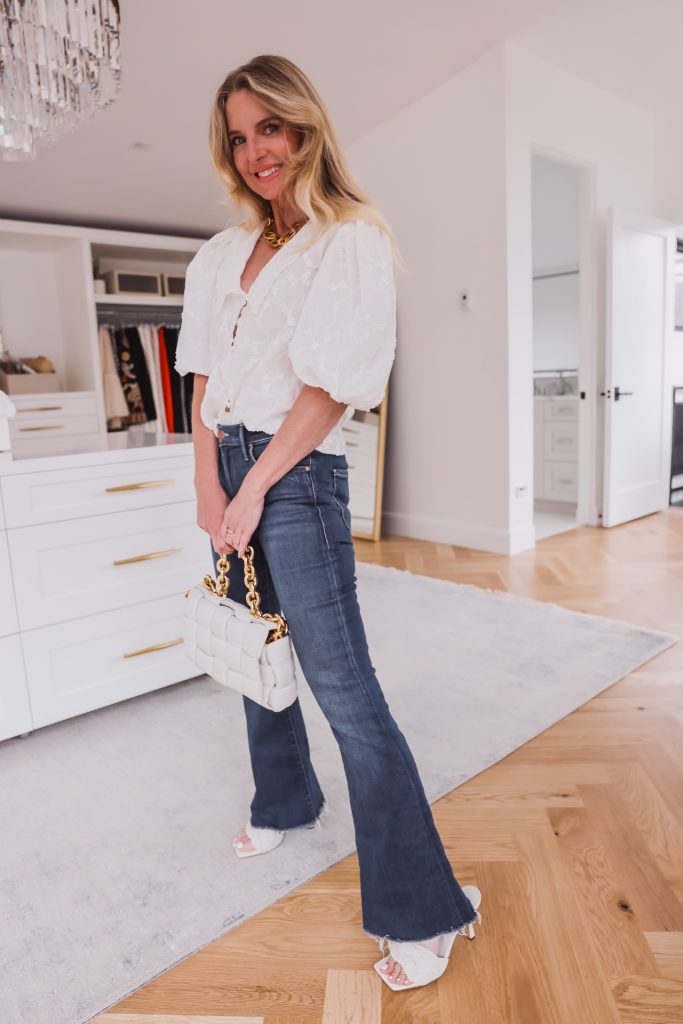
Assess the Fit:
Determine how much smaller you want your jeans to be. Decide if you want a slight adjustment or if you need a significant alteration. Assess the areas that need to be taken in, such as the waist, hips, thighs, or leg length.
To successfully alter your shorten jeans, gather the necessary tools, such as a sewing machine, thread, pins, fabric marker, scissors, and a measuring tape.
Consider your sewing skills and experience. If you’re not confident in your ability to make the alterations, it may be best to consult a professional tailor.
Alteration Methods:
Depending on your desired outcome and sewing skills, there are several approaches to making jeans smaller. Here are some common methods:
Waistband Alterations:
Take In the Waist by Sewing Darts: Create darts at the back or sides of the waistband to remove excess fabric and make the waist smaller. This method is ideal if the waist is the primary area that needs adjustment.
Resize the Waist with Elastic: Install a hidden waistband insert using elastic to create a more adjustable and fitted waistband without compromising the original design. This method works well if you need flexibility in waist size.
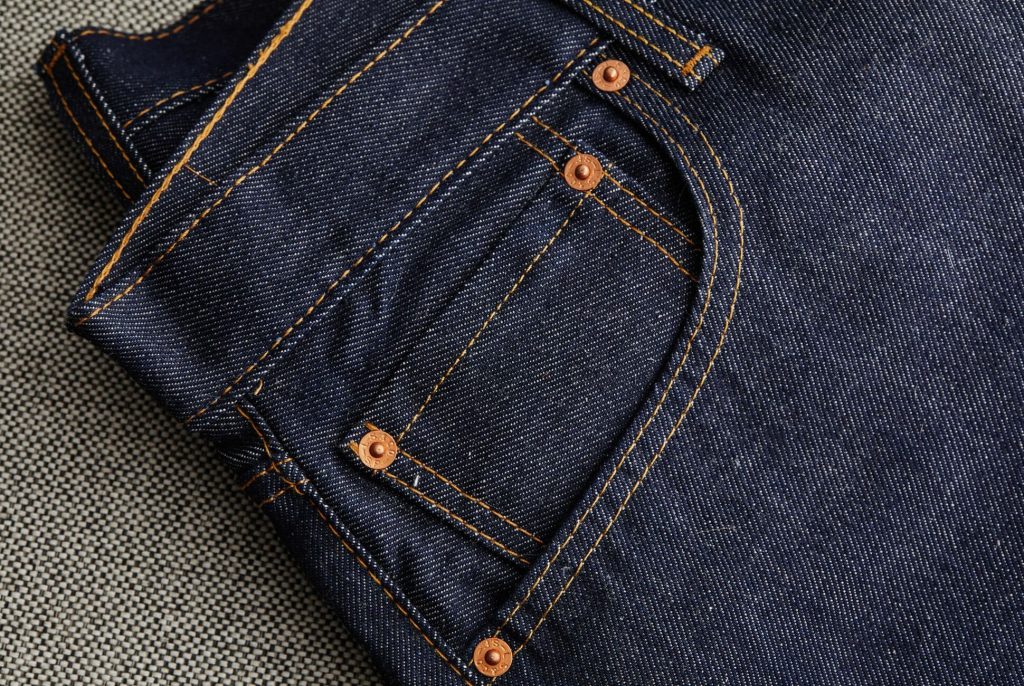
With Side Seams:
Take in the Side Seams: Measure and mark the desired new seam line on the inside of the existing side seams. Use pins to secure the fabric along the marked line and sew a new seam, tapering it towards the hips or knees if necessary.
Add New Side Seams: If you need a more significant alteration, you can create entirely new side seams by removing the original seams and sewing new ones to achieve your desired fit.
Waist and Inseam Alterations:
Adjust the Waist and Inseam Simultaneously: If your jeans are baggy in both the waist and inseam, you can take in both areas simultaneously by tapering the leg from the crotch down to the hem. This method allows for an overall slimmer fit.
Hem the Inseam: If your jeans are too long, consider shortening the inseam by folding or cutting the excess fabric and sewing a new hem. This alteration can give your ripped jeans a neater appearance.
Taper the Legs:
If you prefer a tighter fit from the knees to the ankles, you can taper the leg by taking in the inseam and the outer seam gradually from the knee down to the hem.
If the jeans are loose in the thigh area, you can taper the leg by sewing new side seams that gradually become narrower from the hips to the knees or the hem.
Bonus Tips:
- Use Temporary Alteration Techniques: If you’re unsure about permanent alterations, consider using temporary alteration techniques like fabric tape or sewing basting stitches. These options allow you to test the fit and make adjustments without permanently altering the jeans.
- Seek Professional Help: If you lack sewing experience or prefer a flawless alteration, it is advisable to consult a professional tailor or seamstress. They can provide expert advice and ensure the alterations are precise and well-executed.
- Take Caution with Distressed or Patterned Jeans: Altering distressed or patterned jeans can be challenging as preserving the original design can be tricky. Proceed with caution and consider seeking professional assistance for these types of jeans.
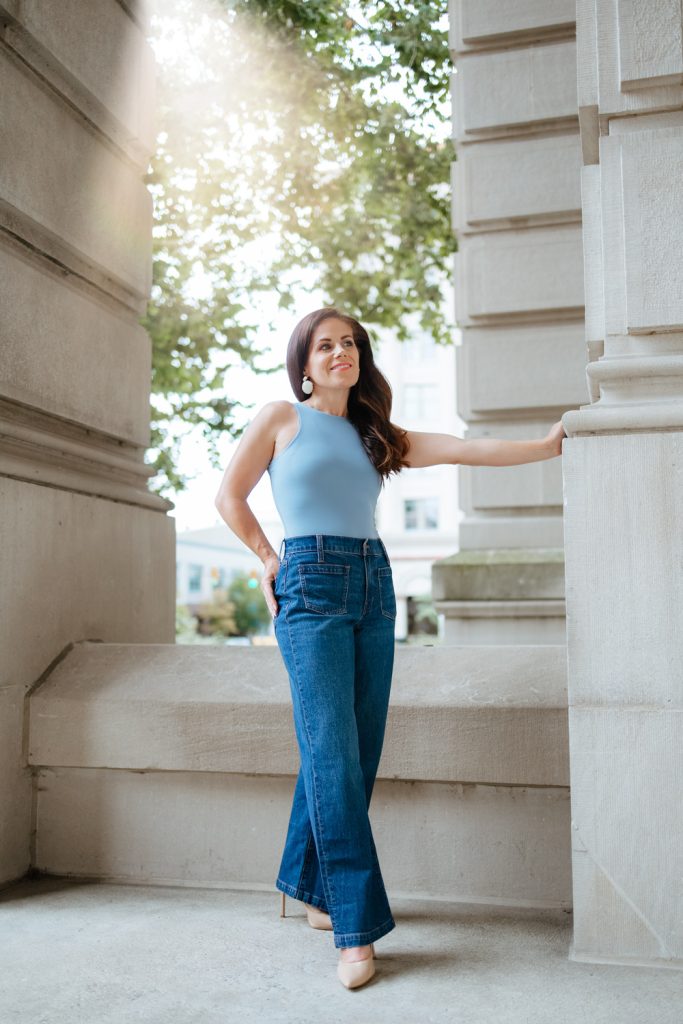
What styles of women’s jeans are there?
Women’s jeans come in a wide range of styles, each designed to flatter different body types and cater to diverse fashion preferences. Whether you’re looking for a classic straight leg, a trendy skinny fit, or a relaxed wide leg, there is a style for everyone.
-
Skinny Jeans:
Jeans are form-fitting from the waist to the ankle, hugging the legs for a sleek and streamlined look. Key features of skinny jeans include:
- High or mid-rise options.
- Smaller leg opening, typically ranging from 9 to 11 inches, for a snug fit.
- Versatile and suitable for various body types, emphasizing curves and creating a modern silhouette.
- Available in various denim washes, colors, and distressed options.
-
Straight Leg Jeans:
Straight leg jeans are characterized by a uniform width from the hip to the ankle, creating a straight and relaxed fit. Key features of straight leg jeans include:
- Mid or high-rise options.
- Leg opening that is similar in width to the knee, creating a straight-aligned silhouette from hip to ankle.
- Suitable for different body types, providing a classic and timeless look.
- Versatile and easy to style, suitable for both casual and dressier occasions.
-
Bootcut Jeans:
Have a slight flare from the knee to the ankle, accommodating the wear of boots while providing balance and length to the leg. Key features of bootcut jeans include:
- Mid or high-rise options.
- Subtle flare starting from the knee and continuing to the leg opening, allowing for comfortable wear with boots.
- Flattering for various body types, as the gentle flare can balance wider hips and provide a more hourglass appearance.
- Classic style that can be dressed up or down, offering versatility in styling options.

-
Flare Jeans:
Flare jeans have a more pronounced flare from the knee to the ankle, creating a dramatic and retro-inspired silhouette. Key features of flare jeans include:
- Mid or high-rise options.
- Noticeable widening of the leg from the knee to the ankle, providing a statement-making look reminiscent of the 1970s.
- Designed to elongate the legs and create a balanced and flattering shape.
- Best suited for those with a taller or athletic build, as the wide flare can overwhelm petite frames.
-
Wide Leg Jeans:
Wide leg jeans are loose-fitting throughout the leg, offering comfort, ease, and a relaxed aesthetic. Key features of wide leg jeans include:
- High or mid-rise options.
- Dramatically wider legs from the hip to the ankle, creating a flowy and exaggerated silhouette.
- Comfortable and airy, making them suitable for warmer weather or casual occasions.
- Can be styled in a bohemian or vintage-inspired manner for a fashion-forward look.

In conclusion
Altering your jean to make them smaller allows you to achieve a more personalized and flattering fit. By following these methods and considering your sewing abilities and desired outcome, you can successfully tailor your jean to match your unique style and body shape. Remember to take measurements, plan your alterations carefully, and use the necessary tools to ensure precise and accurate adjustments.






